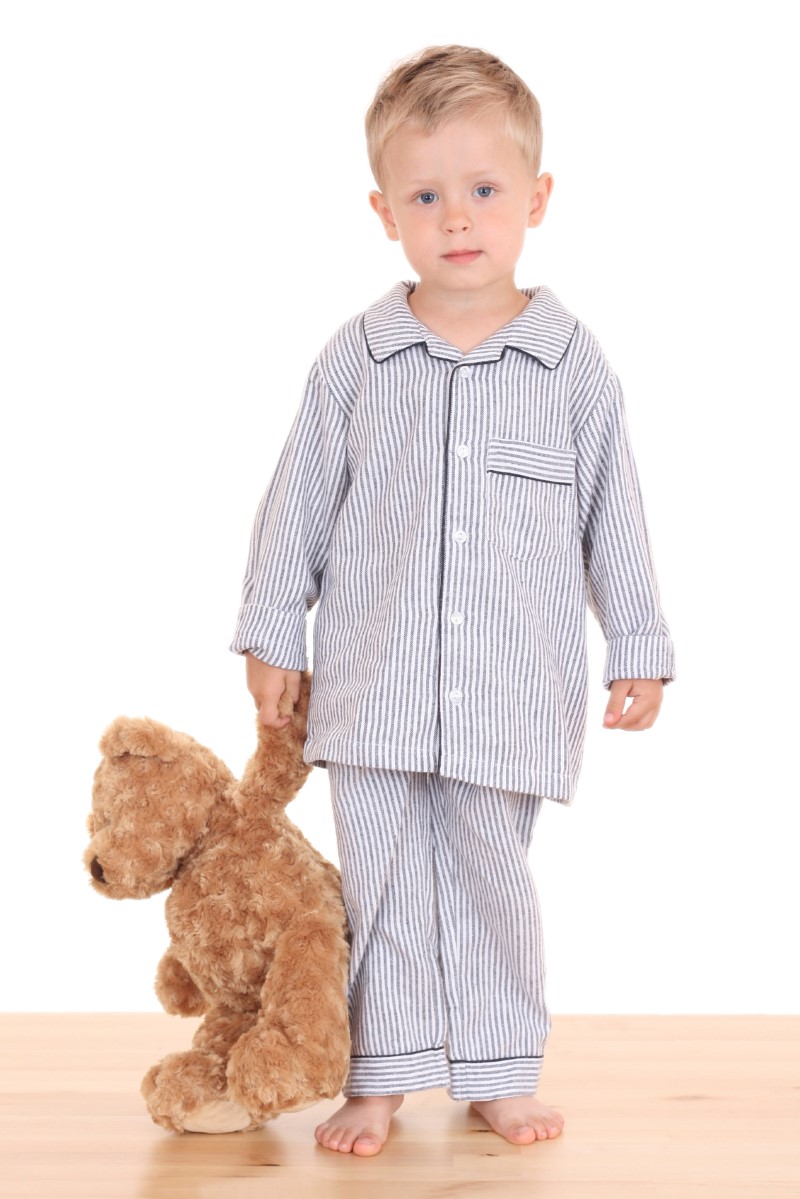4th Year
MONTHS
39 & 40
4th Year – Months 39-40
Your Child May be Afraid of Loud Noises, Baths, and Dogs

Children confuse fantasy with reality. They think that objects are “alive.” They don’t fully understand cause and- effect relationships. These are common fears for three to four year olds:
Fear of Separation
- Preschoolers experience many separations from their parents. They are left with babysitters and they may leave home to go to childcare.
- When separating from your child, stay with them a while to help them get used to the new adults, children, toys or the room. They will feel more secure and let you go with fewer tears.
- Always tell your child that you are leaving. “Sneaking out” only makes them more fearful.
Fear of Baths
- Many young children worry about going down the drain with the water. No amount of logical talk will change this fear.
- Allow your child to play in water in a pan, a sink and lastly — leaning over the edge of the tub.
- Gradually, the fear will go away. Never leave your child alone in the tub.
Fear of Dogs
- Dogs are often loud, fast moving and unpredictable. No wonder some children are afraid of them.
- Look at pictures of dogs and talk about them with your child.
- Watch one from across the street and, finally, pick a gentle dog for your child to approach with you.
Fear of Loud Noises
- Loud noises from vacuum cleaners, hair dryers, saws, fire engines and ambulances are scary.
- Let your child look at and touch appliances in your home before you turn them on.
- Look at pictures of a fire truck and talk about why its sound is so loud.
- Teach your child to cover his ears to muffle loud sounds.
Fear of Change
- Your child probably likes his world best when things go along as usual. They enjoy hearing the same story and eating peanut butter and jelly sandwiches every day for lunch.
- When things change — such as dinner is served at a different time, or Mom or Dad don’t come home from work at the usual time — your child may become afraid.
- When you know changes are going to happen, tell the child about what will probably happen — and ask them to talk about it with you.
Fear of the Dark
- Children are often afraid of the dark.
- It is OK to keep lights on or give your child a flashlight at bedtime.
- With time, you can reduce the amount of light. Some children decide on their own to turn lights off.
What’s It Like to Be 39–40 Months Old?

How I Get Along
- I like to copy adults.
- I can pretend to be an animal when I play.
- I am interested in playmates.
- I am beginning to take turns.
- I want to please adults, but I also want to be independent.
How I Move
- I can carry drinks without spilling.
- I ride a tricycle.
- I alternate feet when climbing stairs.
- I am getting better at handling small objects.
How I Think
- I operate in the here and now.
- My attention span is 4-8 minutes.
- I understand, “It’s time to…”
- I can name and match simple colors.
- I understand two directions given one after the other.
Some children do things earlier or later than described here. Most differences are normal. Focus on what your child can do and get excited about each new skill. If you notice that your child is lagging behind in one or more areas for several months, use this list to talk with your doctor about your child’s development.
What Can You Do When Your Child is Afraid?

- Give hugs, reassurance and talk to your child about what is making them feel afraid.
- Never laugh or make fun of your child’s fears —and do not get angry with them.
- Never threaten a child with the bogeyman or spooky stories. Be sure that older children or adults do not scare your child for their own fun.
- Avoid scary television programs or movies.
- Try play-acting, drawing, using dolls, puppets or stories to help your child talk about a frightening experience. They might learn to tell a frightening monster, “Go away. I don’t like you, and I don’t want you to come back.” This may help your child feel more in control of their life.
- Help your child understand the difference between healthy and unhealthy fears. For example, your child needs to know that the loud scream of the fire engine is a healthy fear and means, “Danger, get out of the way!”
Choose Healthy Foods for Your Child

Foods That Preschoolers Need:
My Plate for Preschoolers Lists
- Grain Group: foods that use whole grains — 100% whole wheat bread, oatmeal, whole grain pasta, whole grain corn or wheat tortillas, brown rice
- Dairy Group: milk, cheese, yogurt, ricotta cheese — move toward skim, 1% and 2% fat, when possible
- Protein Foods Group: eggs, cooked lean beef, chicken, turkey, pork or ham, cooked beans, peanut butter
- Fruit Group: oranges, apples, raisins, peaches
- Vegetable Group: sweet potatoes, green beans, raw or cooked carrots, lettuce and tomatoes
Children often go on “food jags” and want to eat certain foods all the time — then change and eat other foods. This is OK as long as the food is nutritious. Children will eat what their bodies need if you make a variety of foods available. For example, your 3-year-old might eat pears, peaches and pineapple for several weeks, but not bread. Then suddenly, no more fruit, but lots of meat. Then milk and cheese will be a favorite.
Sometimes give your child a new food. Do not insist that they eat it, but let them know about it. Talk about the shape, texture and color. Encourage them to taste it. If they do not like it the first time around, serve the food again in a few weeks. Children’s tastes change just like adult’s. As they get older, children learn to like more foods.
- Serve foods with a variety of colors. This adds interest to the meal.
- Avoid very hot or very cold foods.
- Use small plates. Let your child serve themself and decide how much to eat.
- Make foods easy to eat. Serve only one food that requires a spoon or fork so your child can practice using it. Other foods can be finger foods. For example, your child can use his fingers to pick up carrots, but needs a spoon for brown rice.
- Fill drinking cups less than half-full. This makes drinking easier and is less messy in case of spills.
- Serve meals at regular times. A hungry child is irritable and less likely to cooperate and eat well.
- Avoid nagging about table manners — but encourage your child when they use a spoon, tries new foods, or wipes his face with a napkin.
- Appetites change. Your child may be very hungry one day and only a little hungry the next. That is okay.
When children help prepare food, they are more interested in eating. Children like to help. When they help prepare food, they will be more interested in eating it. They also learn helping skills, counting skills and cooperation.
- Try to allow enough time to prepare meals so that you are not rushed.
- Be patient and give your child a chance to help with small jobs.
- When you ask your child to do something, give simple directions. “I need one fork from the drawer. Can you get it for me? Would you please get the carrots out of the refrigerator?”
- Watch your child to see that they can handle the job. If the refrigerator door is hard to open, think of things they can get out of low cabinets instead.
- Show what you mean. “Watch me pour the flour in the bowl. Now you try it.”
Here Are Some Jobs a Three to Four Year Old Can Try:
Wash vegetables • Snap beans • Shape burgers or meatballs • Get out silverware • Peel banana if top is cut off • Clear dishes from table • Pour ingredients • Pour juice from small pitcher • Spread peanut butter on bread with the back of a spoon
Bedtime Routines Can Make Your Life Easier!
 Bedtime can be a struggle. Your child may resist attempts you make to get them to sleep at a reasonable hour. Here are some tips:
Bedtime can be a struggle. Your child may resist attempts you make to get them to sleep at a reasonable hour. Here are some tips:
Have a Bedtime Routine
- Do quiet activities with your child before bedtime — like reading a book, taking a bath or listening to soft music.
- Doing fast-paced activities right before bedtime may make your child too excited to sleep.
Do the Same Thing Every Night
- Start the routine at the same time every night.
- Go through the routine in the same order — your child knows what to expect. For example, we read the story after you brush your teeth.
Allow Your Child to Take a Favorite Safe Thing to Bed
- A teddy bear, blanket or favorite toy.
- This will help them fall asleep at bedtime and help if they wake up in the middle of the night.
Make Sure Your Child is Comfortable
- Your child may need a drink of water, a dim light left on or the bedroom door left open.
- Try to handle these needs before bedtime so they cannot use them to avoid going to sleep.
Do Not Go to Your Child’s Room Every Time They Call for You
- Wait several seconds before you answer and wait a little longer each time they call you.
- Reassure your child that you are in the next room. If you need to go into their room, do not turn on the light, play with them or stay long.
- Remind them each time that it is time to sleep.
Choosing Between Two Things Gives Your Child Practice at Making Decisions and Helps Them Feel Like They Can Control Some Parts of Their Life
- When offering choices, be sure that you will be happy with either choice your child makes. For example, “Would you rather wear the red pajamas or the yellow ones?” As a parent, you need to be okay with your child choosing either one.
- “Would you like the light on or off?” Do not offer these choices if you are not willing to leave the light on.
Other Choices Could Be:
- “Would you rather sleep with the door open or shut?”
- “Would you like to sleep with the blankets on or the blankets off?”
- “Would you like a drink of water in the green cup or the red cup?”
- “Would you like to read in bed or go right to sleep?”
Answer Your Preschooler’s “why” Questions and Help Them Learn
It may be hard to answer questions all day long, but your child will have hundreds! They want to learn about everything. When your child was two years old, they may have asked questions like, “What is this?” Your 3-year-old will want to know “Why?”
Don’t be surprised by questions like:
- Why are you doing that?
- Why is the ceiling high?
- Why do the clouds move?
- Why aren’t the clouds moving?
- How did you do that?
What is this for? Although you may get tired of answering so many questions, this helps your child learn. If a child gets no answer, they may stop asking.
- Answering questions encourages curiosity.
- Try to give simple answers.
- Avoid too many details. If you have not given enough information, your 3-year-old will ask for more!
- Try asking them what they think the answer is.
Is Your Child’s Playground Safe?

Your child needs a place to have fun and get fresh air and exercise —but sometimes playgrounds can be dangerous. Take time to check the equipment and surfaces for potential problems. Teach your child playground rules to help keep them safe. Ask yourself these questions:
- Is the equipment the right size for my child? Larger equipment may increase the chance of injury.
- Is the equipment installed correctly?
- Are there moving parts that may pinch or catch any part of my child’s body?
- What is underneath the equipment? It is important to have a safe landing site like sand or a soft surface.
- Are there splinters or screws and nails that are sticking out?
An adult needs to watch children at all times on the playground. Make sure your child uses the equipment in the right way. Younger children often don’t know when they are putting themselves in danger —like running into the path of a swing. If your child does get hurt, having an adult around to tend to his needs quickly is important.
Set Limits on Your Outside Activities – to Protect Your Couple Time
Time is tight and sleep is precious —so many parents feel overwhelmed by what used to be normal social ties and activities.
- Family gatherings or outings with friends may seem to be too frequent and hard to manage. The pressure to attend events may build up so much that you explode and accuse your family and friends of expecting too much.
- On the other hand, you might cut out all social activities.
Both reactions are extreme. It is helpful to recognize when you start feeling pressure and resentment and deal with it. Take a few minutes to step back and think about the benefit you receive from keeping relationships with family and friends strong. The same relationships you considered stressful can also be sources of support. These friends and family may be able to pitch in when you need some help or just want someone to laugh with.
Take some time to talk to your partner and set some reasonable expectations and limits. Start the conversation with these questions.
- Which get-togethers do we attend and which can we skip?
- Should friends or family call us before dropping in?
- Should we set aside a family night and have no distractions from the outside world?
- Which recreational activities are most important to us?
- How often should we have a night out alone?
Thumb Sucking Is Common for Three Year Olds

Your child may use thumb sucking as a way to fall asleep or to calm down when under stress. More than likely, they will stop this habit naturally. Putting pressure on them to stop may do more harm than good.
Most doctors consider thumb sucking normal until around the age of four —and recommend parents ignore it. This is especially true when the child is sick, tired or stressed. If your child only sucks their thumb when they are bored, try to distract them by giving them an activity to keep their hands busy.
The American Dental Association reports children can suck their thumbs until around the age of 4 or 5 without affecting their teeth or jaw. However, if you start to notice a change in how your child’s teeth are lining up or a change in the roof of their mouth, talk to their pediatrician or dentist.
When You Give Your Child Simple Choices, You Are Teaching Them How to Make Decisions
- Your child may want to choose what clothes they wear. Let them decide if they want to wear a blue shirt or a green shirt.
- Give them two choices for the vegetable at dinner. Make sure you have both on hand. It will frustrate them if you don’t have the one they pick.
What to Do When Your Child Seems to Stutter
Many children at this age seem to stutter. This is because they think of words faster than they can say them. This sounds like stuttering. Do not worry.
- Be sure to give your child plenty of time to speak.
- Listen patiently and look at them.
- Ask questions to encourage them to continue to talk —so they doesn’t become afraid of talking.
If they say some words wrong, include the right pronunciation in your answer. For example,
Child: Can I have a bebana?
You: Yes, I will get a banana for you.
This kind of response helps children want to try the word again. Your child can understand and use almost 1,000 words. The more your child talks and listens to others, the more words they will learn and use.